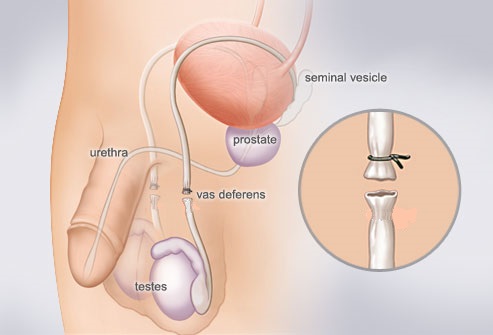No Scalpel Vasectomy
No-Scalpel Vasectomy (NSV) was first developed in China in 1974, and is now the recommended method of vasectomy throughout the world, being used extensively in the USA, UK, China and many other countries. Over the years the NSV technique has continually evolved to be more rapid, less invasive, with fewer complications than traditional methods.
In vasectomy the tubes carrying sperm (vas deferens) from the testicles are treated to prevent sperm mixing with the semen, essentially making the man sterile.
In traditional vasectomy, two incisions (cuts) are made on either side of the scrotum and through these each vas is located, cut and both ends tied (or clamped with a permanent titanium clip). Traditionally the skin wounds are closed with stitches.
NSV differs in the way the local anaesthetic is administered, and in that a significantly smaller, single “keyhole” entry is made (you have a single wound in the midline of the scrotum). There is no cutting of tissues with a scalpel as in traditional vasectomy. These measures mean that the likelihood of bleeding and therefore subsequent swelling and pain is much reduced. In addition, there are no stitches required in the skin, which also makes aftercare a lot more simple, and less prone to infection.
Our method is also “open-ended”, whereby the treated vas deferens end attached to the testicle is not tied, closed with cauterising, or occluded with a titanium clip. Repeated medical studies have confirmed that this method reduces the small risk of longer term testicular aching (called “Post-Vasectomy Pain Syndrome”) which is sometimes experienced after traditional vasectomy, due to a physiological build up of pressure and congestion from sperm damming up behind the occluded lower end of the vas deferens.
A further advancement of the open-ended NSV is a surgical technique known as “fascial interposition”, which is a method of creating a physical barrier between the two cut ends using tissue which normally covers the vas known as fascia. Internal, dissolving stitches are used to tie off the fascia to create this barrier, which has also been shown in medical studies to significantly further reduce the incidence of recanalisation (whereby the two cut ends manage to find themselves and heal up, essentially making the patient fertile again).
In summary, the NSV method means vasectomy is now quicker, less invasive and performed under local anaesthetic (without the need for a general anaesthetic). With a much improved recovery time and lower complication rate, vasectomy is also the most reliable form of contraception available. For men or couples certain they do not want any more children, this makes vasectomy the ideal option for permanent contraception. NSV has a lower failure rate than the oral contraceptive pill, tubal ligation (women having their “tubes tied” – which is much more invasive than vasectomy), and other current options available for family planning.
A NSV procedure at Oxford Day Surgery usually takes about 15 – 20 minutes, but men can expect to be at the surgery for about an hour in total.
Feel free to discuss any further questions or queries relating to the above at the initial consultation with our surgeon.

